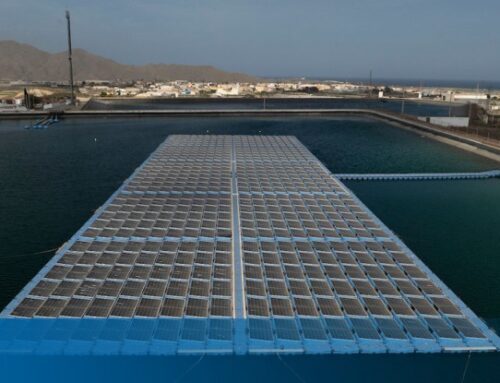Wind energy is bringing major dollars to some Ohio counties. Others aren’t blown away
April 22, 2025
When Tony Zartman first ran for Paulding County Commissioner in 2009, he said the local government was so poor, it could barely afford to replace a lightbulb.
“It was terrible,” he said. “Our community was really strapped for funds for just the daily necessities.”
Reeling from the Great Recession, the northwest Ohio county closed its jail and cut hours for government employees.
“It was a very challenging time,” Zartman remembered.
But then came wind energy.
Paulding County was one of the first in the state to invest in large-scale renewable energy projects more than a decade ago. Now, as groups of concerned citizens in largely rural, conservative-leaning communities put a stop to new industrial wind and solar farms, Zartman says Paulding County is reaping the benefits of renewables.
Their investment spurred community development, he said.
“And everybody is benefiting from it whether they like it or not.”
Now, as the director of operations for the Ohio Conservative Energy Forum, Zartman travels the state advocating for more communities to embrace renewable energy.
Developing wind energy in Paulding County
In 2010, the Ohio legislature passed Senate Bill 232, allowing counties to declare themselves “alternative energy zones,” meaning they could approve energy projects like wind and solar farms. Then, instead of paying property taxes, companies would make direct annual payments to the county based on how much energy they produced.
Paulding County was quick to jump on board.
“We were the first county in the state to enter into an alternative energy zone,” Zartman said.
About a year later, the first wind turbine started spinning there. Now, they line the county’s horizon.
James Growe manages 164 wind turbines across two projects in Paulding County. Each turbine produces about two megawatts of energy every hour.
“That’s two million watts, to put it simply,” he said, enough to power 800 to 900 Ohio homes.
As they generate that energy, Paulding County is making a windfall. With the annual payments it has received from wind energy projects, the county has returned to a full five-day work week, given raises to government employees and expanded services.
“We now have a library system that’s in every town,” Zartman said. “We have a very active parks board that we didn’t have before. And they’ve got funding. They’re redoing a lot of parks in the community.”
The county reopened its jail and hired more police officers.
“This just truly has been a life-saving adventure for us.”Tony Zartman
“Before the development of wind, we averaged one deputy on duty for the entire county at night. That’s all we could afford,” Zartman said. “Afterwards, we were able to increase those numbers to where now we have several deputies on duty at night and during the day — the adequate amount, according to the sheriff, to protect the community.”
Local schools hired more teachers, offered opportunities for higher education and added more sports and extracurricular activities.
“This just truly has been a life-saving adventure for us,” Zartman said.
But not everyone agrees.
Opposition to renewable energy projects
Chase Dunderman and Ginna Hinchcliff are founding members of a group called Paulding County Ohio Anti Wind and Solar.
Both are lifelong residents of the county, and have witnessed it change with the development of wind and solar farms. They worry about how the industrial equipment is maintained, and wonder what will happen if the towering turbines stop working.
“I’m afraid it will turn into an industrial wasteland,” Hinchcliff said.
They acknowledge the county has benefited from the energy company’s annual payments. Hinchcliff used to work for the county library, so she experienced its growth first-hand. But they’re not convinced enough of the corporate money is trickling down to the average person.
“You got a multi-billion dollar corporation basically just chucking pocket change at people so they can keep their fortunes rolling in,” Dunderman said. “I’ll admit it, we live in a very low-income area, and they pick counties like this because their little pocket change is going to seem big to people.”
Dunderman and Hinchcliff collected about 150 signatures from Paulding County locals in an effort to stop a wind development. But their work hasn’t gained enough traction to sway county commissioners, who — because of Senate Bill 52, a state law passed about four years ago — have influence over the future of local renewable energy projects.
One county over, a similar group has seen more success.
The Putnam County example
During a public meeting with a renewable energy company a few weeks ago, residents in Putnam County made it clear to county officials they don’t want more solar.
“We, the opposition to them, packed that room in the courthouse, so they know that we’re still watching,” said Adrian Schroeder, an admin for the Facebook group Putnam County for the Restriction of Solar and Wind Farms.
A 900 acre solar farm surrounds her community, and she worries about what will happen if it expands.
“Without restrictions, we could have thousands of acres [of solar panels] and the impact to our agricultural economy would have been significant, quite a detriment,” she said.
Schroeder has other concerns too: were the solar panels made with forced labor overseas? Who are they hiring to work the farm? And how do renewable energy projects impact property values nearby?
Those concerns have merit: some Chinese solar companies have been found using forced labor. Many companies say they prioritize local labor, but sometimes hire people from other communities. And a study from the Lawrence Berkeley National Laboratory found that homes near large solar farms do have lower resale values, though only by 1.5%.
The other day, Schroeder looked out a friend’s window to a sea of solar panels.
“And I thought, ‘Wow, you guys do not have a horizon anymore, you don’t have a sunset,” she said. “To some people that might seem trivial, but we all choose to live in rural Ohio, rural America for a reason. We aren’t living in town. We’re living here because we want the benefits of living with the open air.”
Like Dunderman and Hinchcliff, Schroeder acknowledges the local community is benefitting from annual payments from the energy company. But she says the local school district was already well-managed. And while the town plans to use the money to build a sewer system, she says that hasn’t come to fruition yet.
“I think renewable energy is necessary. If we’re going to keep the population growing, we need to have alternative sources,” she said. “But we need to do it the right way.”
As an example, she lists installing solar panels on roofs instead of using valuable farmland
The future of renewable energy in Ohio
In response to pressure from people like Schroeder, Putnam County Commissioners have put a moratorium on new large-scale solar projects.
At least 25 other Ohio counties have enacted similar bans. Most are rural and red-leaning — similar demographics as Paulding County — but they’ve made a different choice.
Zartman says they’re missing out.
“The payments that they could be receiving, they’re so substantial, they really are life changing for that community,” he said.
And he says, the state is hurting too. Right now, Ohio isn’t producing enough energy to meet its demand, so it’s pulling in power from other states.
That’s a problem, Zartman says, but it’s one with a green solution — environmentally and financially.
Search
RECENT PRESS RELEASES
Related Post



